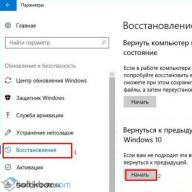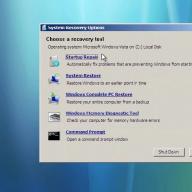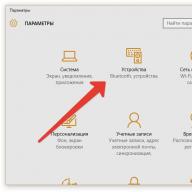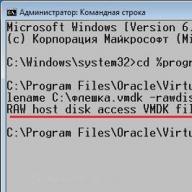for twisted pair connection via RJ-45 connectors
Sold by the piece 25 rubles from 1 piece and only for cash.
Brief description and scopepasserRJ45-RJ45
Pass-through adapter (pass-through)8P8CRJ45-RJ45for unshielded twisted pairUTP cat5e.
usedfor connecting two 8-core computer cables.With it, you can easily and quicklyconnect the brokencomputer or telephone lineor extend an existing cable. At the same time, the signal quality of the cablewill remainpracticallyat the same level.
Unitedthe cables remain securely fixed, which eliminates the loss of contact. Compact connectors make it easy to fit anywhere and will not interfere with cable management. The connection is made through the 8P8C connector using the RJ-45 connector. The RJ series connector is used when laying computer and Internet networks based on twisted pair.
Feed-through adapterrefers to passive network equipment and is used indoors.
SpecificationspasserRJ45-RJ45
Material - plastic.
White color.
Compatible with RJ-45 and RJ-11 connectors.
I think many of us understand that connecting a twisted pair cable to each other does not imply high qualifications, but some nuances in this matter should still be taken into account. Restoration or extension of a twisted pair cable at home or in the office has to be done for various reasons. For example, you decide to move your computer to a new workplace, combine several computers into a local network, and you don’t have enough LAN cable length, or you accidentally passed the twisted pair cable with a table leg, and now it needs to be repaired.
As you understand, there can be many reasons when it becomes necessary to connect a twisted pair. Of course, in such situations, nothing prevents you from contacting the services of a specialist, but if you are not averse to quickly repairing the damage without resorting to outside help and want to connect the LAN cable yourself, then ...
You can repair a damaged LAN cable or extend it by twisting or soldering single-color wires together or through a special RJ-45 connector. With the help of twisting (method of telephonists), you can connect a twisted pair, while maintaining the strength and operability of the line without a connector and an RJ-45 connector (8P8C).
But connecting a LAN cable by soldering or a detachable connection requires you to have experience and a tool. In fact, splicing a twisted pair using these methods is not difficult, but it is not always possible to have a soldering iron, crimping pliers and connectors at hand. Therefore, twisted pair twisting is an alternative method to these two, but even in this case, you will need at least electrical tape and a knife. In general, I will not pour "water" into the article, but I will tell everything in order.
Twisted pair connection, through connector and connector.
In general, there are several types of connectors that are used depending on the technical characteristics of the twisted pair cable (read more here). In addition, there are varieties of connectors for connecting a cable using an RJ-45 connector (8P8C) and without it. If you have a connector for RJ-45 connectors at hand, and there are no special crimping pliers, then it is quite possible to quickly and accurately crimp a twisted pair without them. In one of the previous publications, there is also a detailed description of the twisted pair crimping method with a screwdriver.
![]()
![]()
If possible, you can use a connection module to connect two pieces of twisted pair without RJ-45 connectors (shown in the figure above). In it, you just need to stick the wires according to the applied color scheme. All of these connectors are used in repair work to quickly repair, easily and reliably connect a damaged LAN cable. I believe that you should not have any questions while using such a module, but what to do if you don’t have a single type of connector and RJ-45 connector at hand?
Connecting twisted pair wires by soldering.
This method is one of the most reliable ways to connect a twisted pair to each other, but it assumes that you have a soldering iron within reach, solder with flux inside or separately ... If you held a soldering iron in your hands, then you certainly know what successful soldering depends on, but for beginners sometimes this is not easy to figure out. I will try to briefly outline the main points of the soldering business, but if my explanations are not enough for you, then visit some Internet resource dedicated to this matter.
First of all, open the outer sheath with an inner thread from one and the other piece of cable, wrap and fix it for a while with some kind of clamp or electrical tape. Cut the thread, unwind the pair a few centimeters and align, and then remove the insulation from them to half. For this, side cutters / pliers or a knife are suitable.
![]()
![]()
For soldering to be successful, you need to follow a few basic rules. The metal surface should be clean so that the solder fits better to it, and it is better to hold the soldering iron at an angle of 30-45 degrees to the work surface. In this case, to the conductor.
Bring the soldering iron to the place of soldering and warm up the conductor for about 2-3 seconds, and then bring the solder (with flux inside) and apply the required amount. That is, at the place of soldering, the soldering iron will melt the solder from which a little bit of flux will flow out and leave the right amount at the place of soldering. For clarity, I made a quick soldering of the conductors.
![]()
![]()
It remains to carefully and compactly lay the conductors and isolate the soldering and stripping points on them. When insulating, then make sure that there are no sharp ends in the soldering points that can pierce the applied insulation. Upon completion, close the place of restoration / extension of the twisted pair with an outer sheath (if necessary, cut it) on one side and the other and fix it, for example, with adhesive tape, so that this place is less noticeable.
![]()
![]()
If the connection / repair of the LAN cable will be carried out in places where it is exposed to dampness or some other external influences (rain ...), then it is better to close the outer sheath hermetically. It is possible that a twisted pair connection by soldering or a connector does not suit you due to circumstances, then use a simple and understandable twisting method.
Twisted pair twisted together.
As in the previous method, you must first remove part of the outer insulation with an internal thread from one side and the other of the LAN cable. Unwind and align the conductors on one side and the other and carefully strip them from the insulation with pliers or a knife to half.
![]()
![]()
Now you need to twist all the wires together according to the color. To do this, attach both pieces of wire to each other and start twisting the cores from the base of the insulation. Upon completion, be sure to remove the sharp ends from each twist with pliers or side cutters. This method of twisting at the point of repairing a break or building up will give strength to all cores in a twisted pair. Twisting copper strands without the participation of insulation will lead to short-term and possible breakage of the conductors at the place of twisting during physical impact.
![]()
![]()
To make the twisting more or less accurate, you need to release the outer sheath of the cable from the clamps / electrical tape and pull both ends in different directions. This will expand the area for insulating and laying all conductors under the outer sheath.
![]()
![]()
In the next step, try to compactly lay and insulate all ends of the conductors. To do this, separate four pairs in different directions and start laying one pair at a time along the cable and wrap another round of electrical tape on top. Make sure that there is no contact while insulating the stripped ends with other pairs. Do the same with the other four pairs on the back.
![]()
![]()
To make the twist invisible to the eye, put the outer sheath of the cable on one side and the other on the twist so that they cover the junction of the two segments of the twisted pair. Trim the outer cable insulation if necessary. Finally, fix both ends of the outer insulation with tape or ...
![]()
![]()
I already mentioned in the previous method that if the twist is exposed to external factors (snow, rain, dampness), then the top layer of cable insulation should be made more airtight. In general, for outdoor laying, there are certain types of twisted pair. If desired, any of the methods can be improved and finalized for yourself. It all depends on your ingenuity, and I just showed the principle of twisted pair splicing.
Recently, providers are increasingly using to connect to the Internet. This is a simple and reliable way to connect to the World Wide Web. What is especially important, when using a local network, the user does not need to install any programs, drivers or additional equipment (like an ADSL modem).
Your Internet cable must be connected to the WAN port (Internet port) of the router, and the compressed twisted pair cable to the regular LAN port of the router and to your computer. After a simple router setup, you can use the Internet as before.
Method number 3. To lengthen the Internet cable, you can make a twist.
The easiest way. All you need is a piece of twisted pair cable of the length you need. It is not difficult to buy an uncompressed twisted pair cable.
After that, you need to cut your Internet cable in any convenient place and wedge in the purchased piece of twisted pair cable. To do this is quite simple. In order to connect a twisted pair cable, you do not need to solder anything. All that needs to be done is to strip the conductors and carefully twist the twisted pair by color. Naturally, everything needs to be insulated with high quality electrical tape. You can see how to twist a twisted pair cable in the video.




